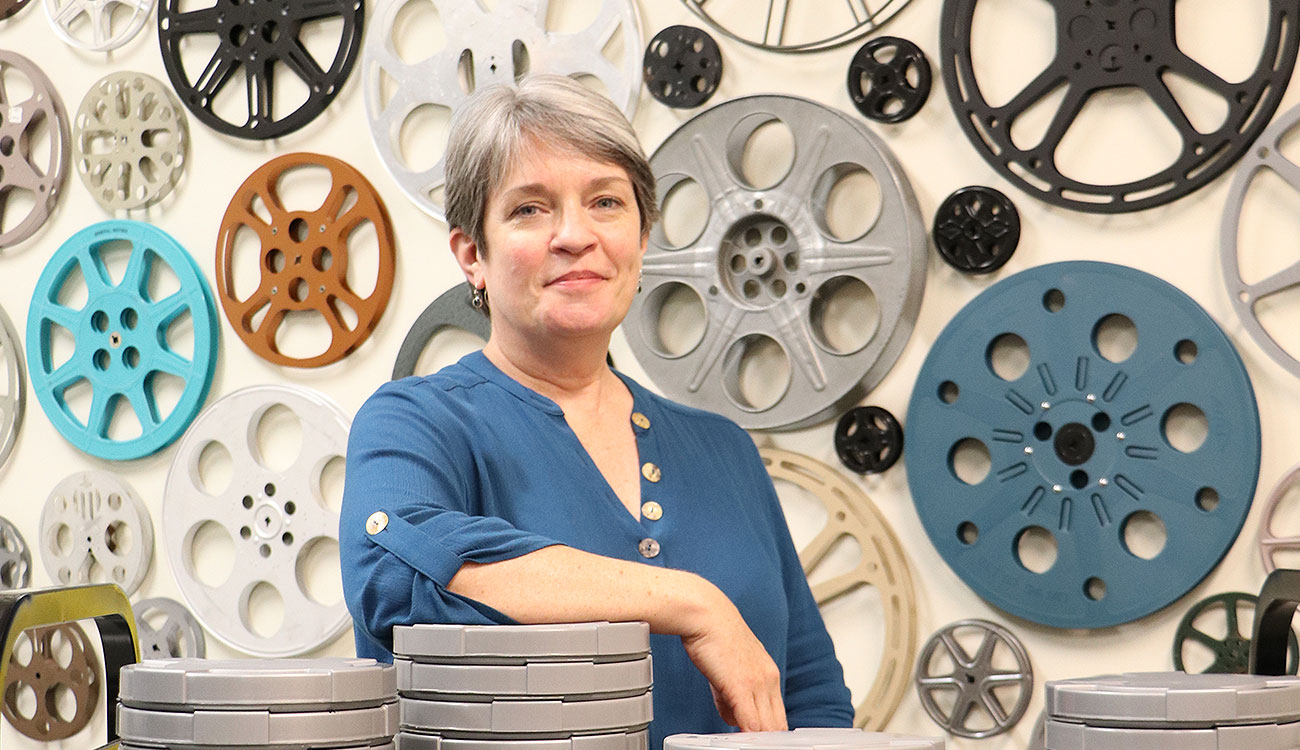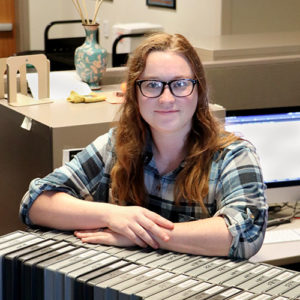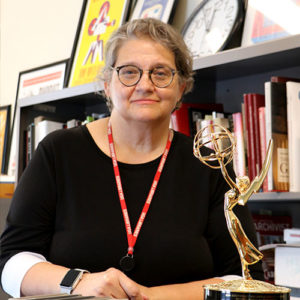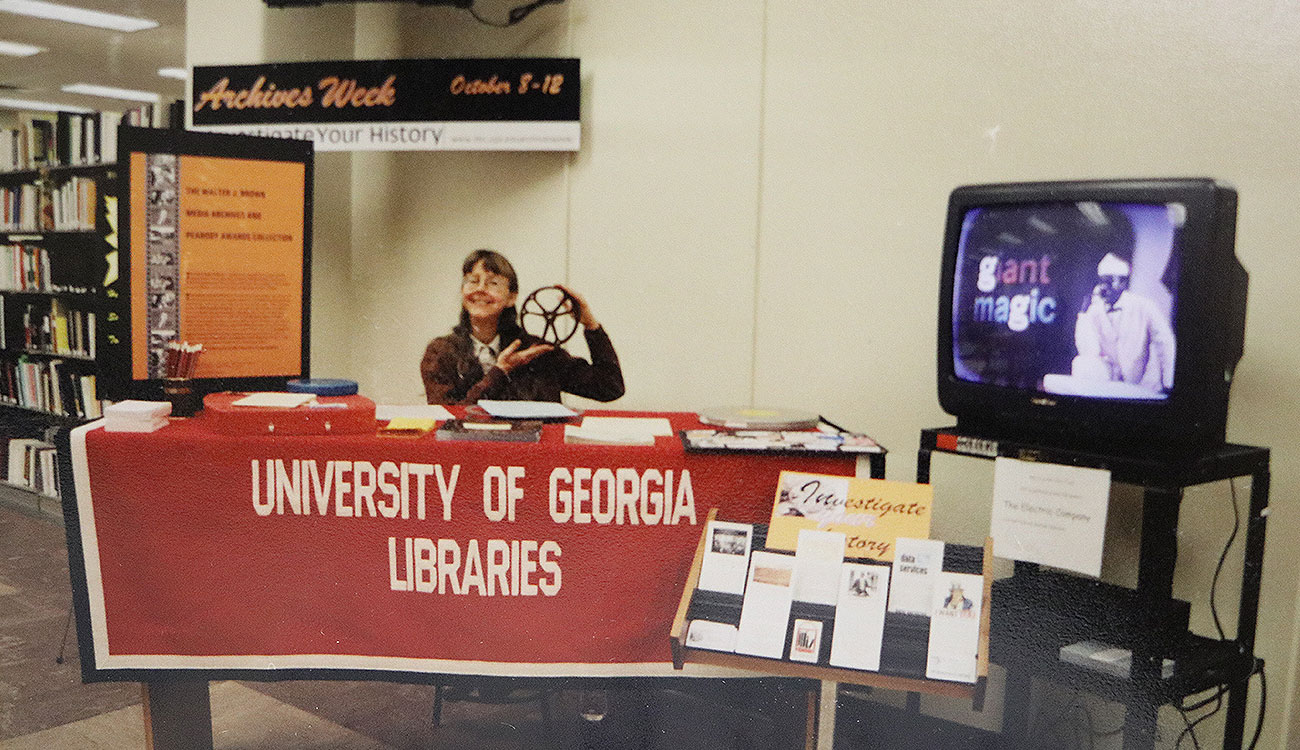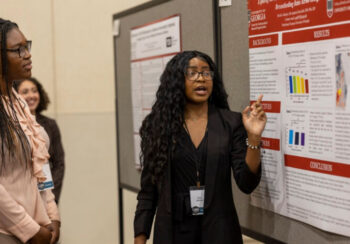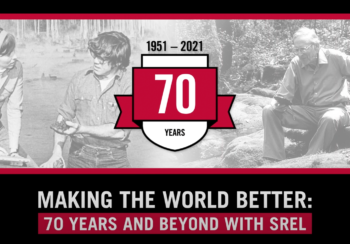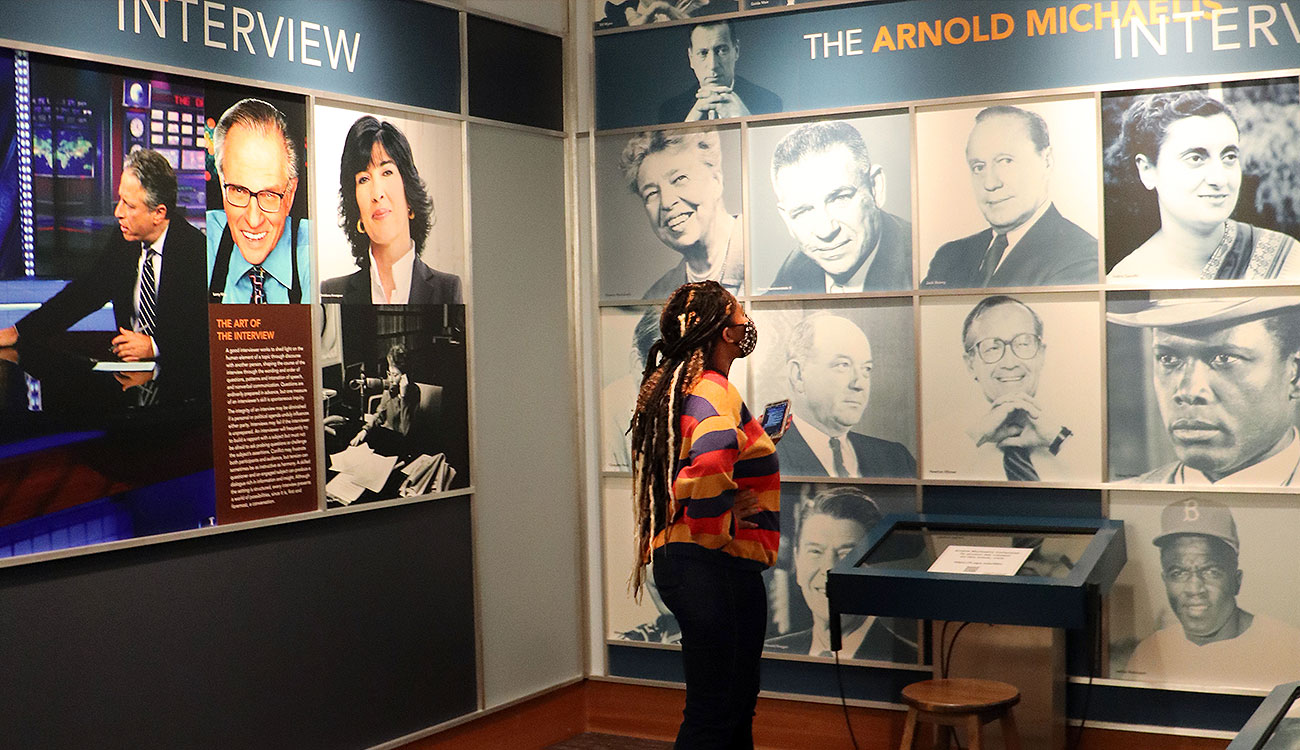
Reel stories
Looking at Margie Compton’s “Reel Wall,” it’s easy to see how unique media can be. Even without the film attached, the empty circles display the trends of the past 100 years, from heavy, fist-sized 1920s artifacts to a stiff cardboard relic during the metal shortages of World War II to the steering wheel-sized bright pink, orange and yellow plastic from later in the 20th century.
They all have the same shape, but the spokes can vary, and the thickness is determined by the gauge of the film. These are just a small sampling of the types of materials that the faculty and staff at the Brown Media Archives care for, but Compton feels the weight of the delicate work of preservation when she glances at her wall.
“I primarily work with the film collections, inspecting donations, making repairs where necessary, and getting an idea of what the material is about,” said Compton, an archivist at BMA.
“I spend time looking at the images on the reels so I can provide some information as to their content as we get the data into our online database, but I also do a bit of research into some scenes if I see a historic event, or something that looks important or unique.”
Compton said she finds it impossible to choose a favorite experience, but noted finding the earliest-known footage of African Americans playing baseball, from around 1919. She also remembers a collection of home movies from William B. Short, a soldier who chronicled his military assignments in the 1930s and ’40s on Kodacolor.
“It’s his personal story, his love of his family and home that are evident in his films, that make these materials memorable for me.”
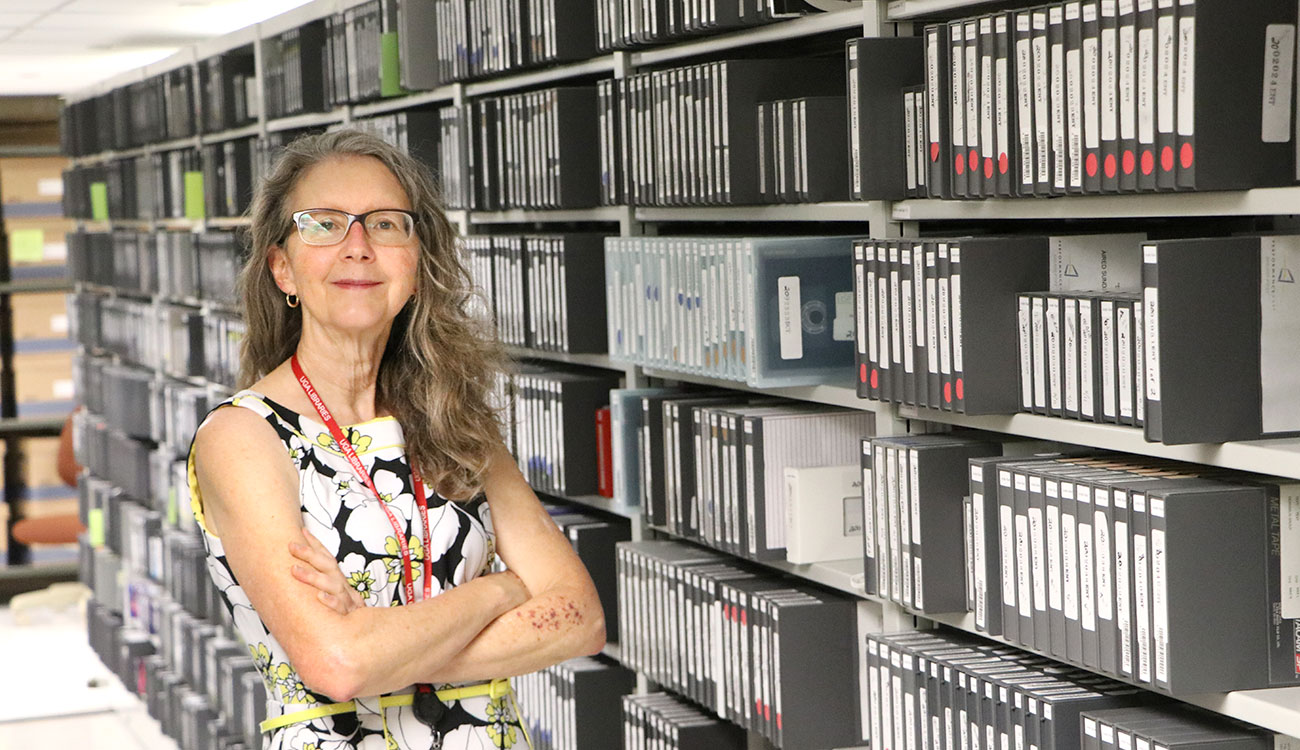
Two of BMA’s faculty members have their own family connections to the archives.
Mary Miller specializes in the Peabody Awards Collection, which houses and preserves the thousands of entries to the prestigious media award, which has been hosted by UGA’s Grady College of Journalism and Mass Communication for 75 years. She noticed a familiar title to one of the entries from the 1940s, the Glenn L. Martin Airplane Company. Miller knew her mother worked as an engineer during the World War II efforts to build planes, so she asked to have the program digitized. She was delighted to hear the voice of her mother, then the only “lady engineer” at Glenn L. Martin, discussing her work as a chemical engineer.
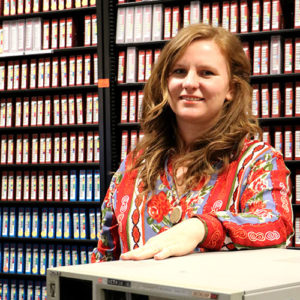
Callie Holmes, a digital archivist who joined the Brown Media team four years ago, felt the call to preserve her own family history, so she donated her parents’ families’ home movies.
“In my father’s family’s collection, we found an amateur film by Walter Bergmann of my family’s peach packing shed in South Carolina in the 1960s,” Holmes said, referring to the acclaimed amateur moviemaker. “It was special to find a piece of film history in my family’s collection.”
The Walter J. Brown Media Archives & Peabody Awards Collection preserves millions of feet of film and videotape, volumes of audio, and terabytes of digital media. Its 410 collections are secured in the vault of the UGA Special Collections Libraries Building, along with collections for two other special collections units.
Tech trove
Everyone has an uncle or family friend that still has an old beta cassette player or some other media relic from a generation ago. Techs at the Brown Media Archives have dozens of old machines that they repair and keep running to view and digitize the wide variety of materials in the collection.
The equipment can feel almost like antiques, but to the BMA crew, it’s about a lot more than nostalgia. They know that one misstep might mean that a valuable piece of history is destroyed.
“I enjoy the challenge of working with precarious formats, knowing that we have a limited number of years to preserve some of the items in our collection and working to make sure that we’re doing that to the best of our ability,” Holmes said. “My role is very technology dependent, and connecting video decks from the 70s with computers from the 2020s is a challenge that I enjoy taking on.”
Holmes leads a team of three full-time audiovisual techs: Thomas May, K.J. McCoy and Tyler Ortel, two of whom were introduced to the archive as students at UGA. Last year, Ortel was named the 2020 Student Employee of the Year by the UGA Career Center.
“To find someone like Tyler, who has a genuine passion for analog videotape, is like winning the lottery,” Holmes said. “His skills are not just rare in our department or at UGA, but even nationally and internationally.”
Ortel and the team helped to identify a man in footage as Ed Dwight, who trained to become the first black astronaut until he was pushed out of the NASA program after John F. Kennedy’s assassination.
“Without Tyler’s work, Dwight might still be languishing in our records as ‘unidentified male,’” Holmes said.
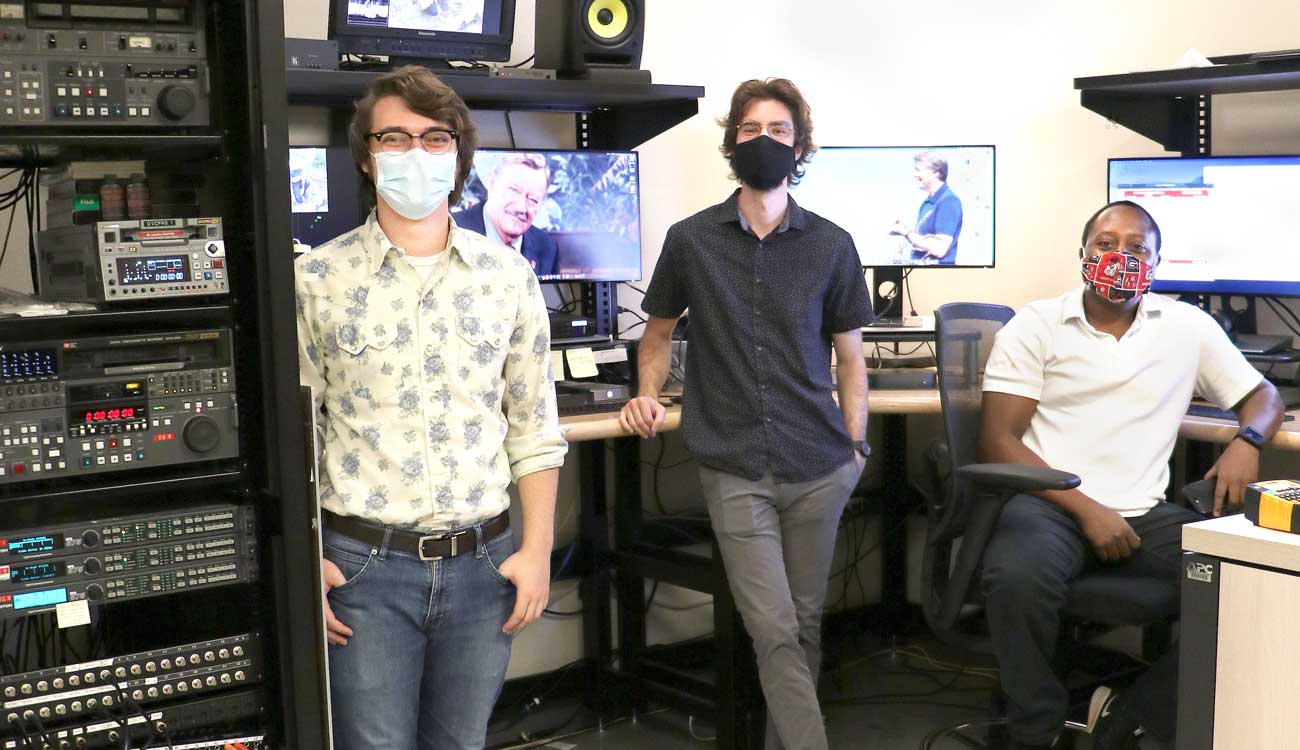
While researchers and documentarians from around the state, nation and world make use of the BMA collections, the faculty in the Russell Special Collections Building remain committed to one constituency that is central to the program’s mission: the students at UGA.
“One of the best parts of my work has always been the opportunity to mentor the UGA students who’ve been employed in BMA over the years,” Miller said. “For most, their time at BMA begins as ‘just a campus job,’ but many have gone on to careers in libraries, archives or the film and television industries. There is nothing more rewarding than helping another person realize their potential and find their purpose, and we get to do that here in BMA.”
Miller and others often work with faculty members in the Grady College and other units across campus to provide archival instruction to classes, and the Brown Media Archives’ faculty work with other special collections archivists to help professors develop new ways to incorporate archival materials into their courses.



